Deciphering transcriptome alterations in bone marrow hematopoiesis at single-cell resolution in immune thrombocytopenia
- PMID: 36202780
- PMCID: PMC9537316
- DOI: 10.1038/s41392-022-01167-9
Deciphering transcriptome alterations in bone marrow hematopoiesis at single-cell resolution in immune thrombocytopenia
Abstract
Immune thrombocytopenia (ITP) is an autoimmune disorder, in which megakaryocyte dysfunction caused by an autoimmune reaction can lead to thrombocytopenia, although the underlying mechanisms remain unclear. Here, we performed single-cell transcriptome profiling of bone marrow CD34+ hematopoietic stem and progenitor cells (HSPCs) to determine defects in megakaryopoiesis in ITP. Gene expression, cell-cell interactions, and transcriptional regulatory networks varied in HSPCs of ITP, particularly in immune cell progenitors. Differentially expressed gene (DEG) analysis indicated that there was an impaired megakaryopoiesis of ITP. Flow cytometry confirmed that the number of CD9+ and HES1+ cells from Lin-CD34+CD45RA- HSPCs decreased in ITP. Liquid culture assays demonstrated that CD9+Lin-CD34+CD45RA- HSPCs tended to differentiate into megakaryocytes; however, this tendency was not observed in ITP patients and more erythrocytes were produced. The percentage of megakaryocytes differentiated from CD9+Lin-CD34+CD45RA- HSPCs was 3-fold higher than that of the CD9- counterparts from healthy controls (HCs), whereas, in ITP patients, the percentage decreased to only 1/4th of that in the HCs and was comparable to that from the CD9- HSPCs. Additionally, when co-cultured with pre-B cells from ITP patients, the differentiation of CD9+Lin-CD34+CD45RA- HSPCs toward the megakaryopoietic lineage was impaired. Further analysis revealed that megakaryocytic progenitors (MkP) can be divided into seven subclusters with different gene expression patterns and functions. The ITP-associated DEGs were MkP subtype-specific, with most DEGs concentrated in the subcluster possessing dual functions of immunomodulation and platelet generation. This study comprehensively dissects defective hematopoiesis and provides novel insights regarding the pathogenesis of ITP.
© 2022. The Author(s).
Conflict of interest statement
The authors declare no competing interests.
Figures


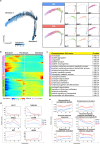

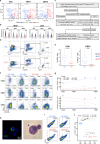
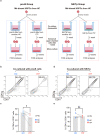
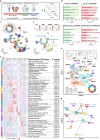
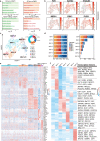

References
Publication types
MeSH terms
LinkOut - more resources
Full Text Sources
Molecular Biology Databases

